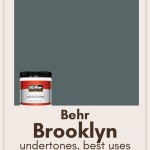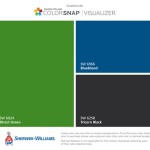The Color Wheel: A Home Painter's Essential Guide
Choosing paint colors for a home can feel overwhelming. The sheer number of options available, combined with the desire to create a specific mood and aesthetic, can make the process daunting. Understanding the color wheel provides a foundational framework for navigating these choices, allowing homeowners to select colors with confidence and achieve desired results.
The color wheel, a visual representation of color relationships, typically depicts twelve colors based on the RYB (Red, Yellow, Blue) primary color model. These twelve hues are categorized into primary, secondary, and tertiary colors. Primary colors, red, yellow, and blue, form the basis for all other colors. Mixing two primary colors creates secondary colors: orange (red + yellow), green (yellow + blue), and violet (blue + red).
Tertiary colors are created by mixing a primary color with its adjacent secondary color. This yields red-violet, red-orange, yellow-orange, yellow-green, blue-green, and blue-violet. The placement of these colors on the wheel illustrates their relationships, facilitating the creation of harmonious or contrasting color schemes.
Understanding these basic color relationships unlocks the potential for creating a variety of color schemes. One common approach is the use of analogous colors. These colors sit next to each other on the color wheel, sharing similar undertones. Analogous color schemes create a sense of harmony and flow, ideal for spaces where a calming and unified atmosphere is desired. For instance, a combination of blue-green, green, and yellow-green evokes a tranquil, nature-inspired ambiance.
Complementary colors, located directly opposite each other on the color wheel, offer a contrasting approach. These pairings, such as red and green or blue and orange, create a vibrant and energetic effect. While full-strength complementary colors can be overpowering in large doses, they can be used effectively as accents or in spaces where a bold statement is desired. Subtle variations in shade and tint can soften the contrast while maintaining visual interest.
Triadic color schemes involve three colors evenly spaced on the color wheel, forming a triangle. This approach offers a balanced and visually stimulating combination. Examples include the primary colors themselves (red, yellow, and blue) or a combination of orange, green, and violet. Triadic schemes are often used in spaces where a sense of vibrancy and playfulness is desired, such as children's bedrooms or playrooms.
Split-complementary schemes offer a nuanced variation on the complementary scheme. Instead of using two directly opposing colors, a base color is paired with the two colors adjacent to its complement. This combination provides a strong visual contrast while being less intense than a direct complementary scheme. For example, blue can be paired with yellow-orange and red-orange.
Tetradic, or rectangular, color schemes utilize four colors arranged in two complementary pairs. This complex combination provides a rich and diverse palette. Careful consideration of color dominance and balance is key to successfully implementing a tetradic scheme, as the use of four distinct colors can easily become overwhelming.
Beyond the basic color wheel relationships, understanding the concepts of hue, saturation, and value is essential for effective color selection. Hue refers to the pure color, such as red, blue, or green. Saturation refers to the intensity or purity of a color. A highly saturated color appears vibrant and rich, while a low-saturated color appears muted or dull.
Value refers to the lightness or darkness of a color. Adding white to a color creates a tint, while adding black creates a shade. Understanding value is crucial for creating contrast and depth within a space. Manipulating value can also influence the perceived size and shape of a room.
Testing paint colors in the intended space is critical. Colors can appear differently under various lighting conditions and in relation to surrounding surfaces. Applying sample patches to the wall and observing them throughout the day allows for a more accurate assessment of how the colors will appear in the actual environment.
Consider the function and mood desired for each room. Warm colors, such as reds, oranges, and yellows, tend to create a sense of energy and excitement. Cool colors, such as blues, greens, and purples, evoke a sense of calmness and tranquility. Neutral colors, such as whites, grays, and beiges, provide a versatile backdrop and can be paired with various accent colors.
The color wheel serves as a valuable tool for navigating the complexities of paint selection. By understanding the relationships between colors and the principles of hue, saturation, and value, homeowners can confidently create harmonious and visually appealing spaces that reflect their personal style and enhance the overall ambiance of their homes.

Choose Paint Colors With A Color Wheel Best Front Door

Interior Paint Color Ideas From The Wheel Certapro Painters Of Wny

Choosing Colors Interior Painting Color Wheel Ct Painters

Choosing Colors Interior Painting Color Wheel Ct Painters

Color Theory For Decorating So Much Better With Age

Choosing Colors Interior Painting Color Wheel Ct Painters

How To Use A Color Wheel Decorate Your Room

How To Choose The Right Paint Color 7 Steps Help You Decide

House Paint Color Wheel Nuancier Palette De Couleurs Roue Des

How To Use A Colour Wheel Choose Complementary Colours For Your Home And Furniture Painting Restoration Refurbishing In Dubai Near Me
Related Posts








